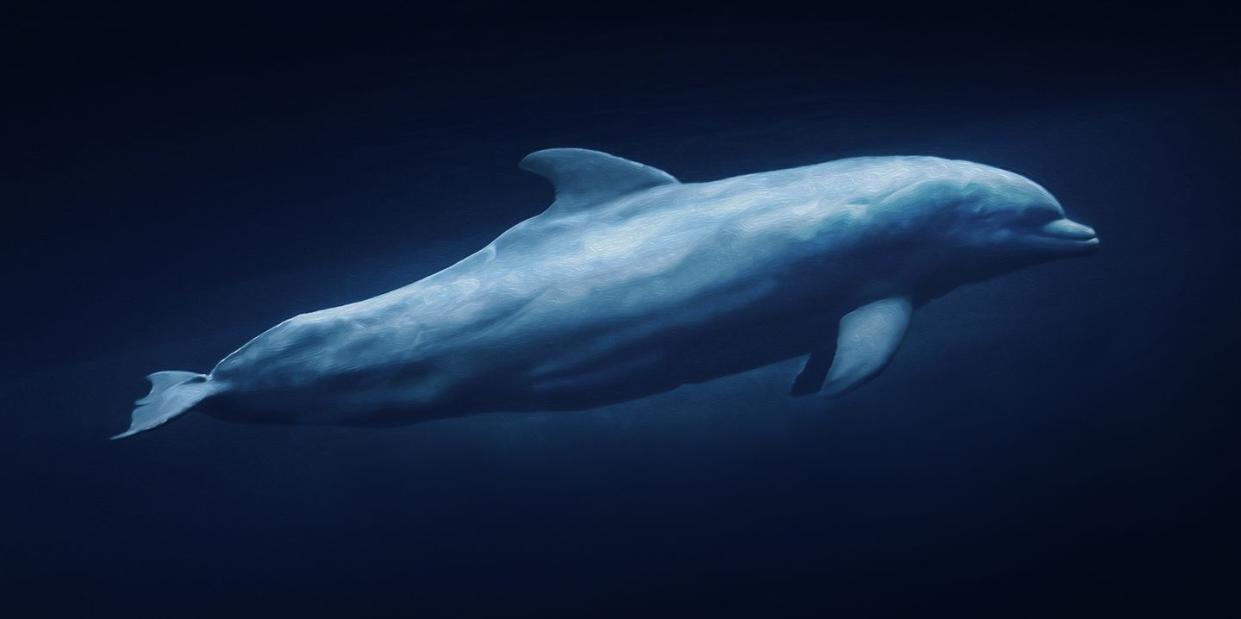Does Iran Have Secret Armed Dolphin Assassins?

In 2000, Iran purchased a fleet of killer dolphins from the Soviet Navy.
Twenty years later, we don’t know whatever happened to the mammals. But if they’re still alive, could Iran potentially use them for warfare against the U.S.?
The U.S. invented the concept of military dolphins in 1960. Today, the Navy trains about 30 dolphins and 30 sea lions at Naval Base Point Loma, San Diego to track sea mines.
As the U.S. military prepares to deal with the fallout from the killing of Iranian General Qassem Soleimani earlier this month, we can expect Iran and Iranian-backed militias to retaliate in any number of ways, from traditional missile strikes to cyber attacks on our oil and gas facilities, banks, electrical grids, and more. But we might not want to count out the possibility of the country employing its fleet of killer Communist dolphins, which may or may not still exist.
Let’s rewind 20 years ago to the spring of 2000, when a Russian man named Boris Zhurid made a painful, fateful sale.
For years, Zhurid had been training a pack of dolphins to kill for the Soviet Navy, according to the BBC. He and other experts taught the mammals to target enemy combat swimmers and divers with harpoons strapped to their backs, capture them, and carry mines to enemy ships in suicide attacks. (The dolphins could tell the difference between Soviet and foreign subs by how their propellers sounded.)
But when funding for that project ran out—and the Soviet dolphin program transferred to the Ukrainian Navy—Zhurid brought his animals to a private dolphinarium on the Crimean Peninsula, where they performed for tourists. Eventually, however, Zhurid couldn’t afford to feed the dolphins anymore.
“I cannot bare to see my animals starve,” the trainer told the Russian newspaper Komsomolskaya Pravda. “We’re out of medicine, which costs thousands of dollars, and have no more fish or food supplements.”
So Zhurid bit the bullet and sold his beloved dolphins—along with walruses, sea lions, seals, and a white beluga whale—to a custom-built oceanarium in Iran, where, the BBC reported, the trainer would be “continuing his scientific research.” Zhurid didn’t say what he and his aquatic mercenaries would do in their new home, but he did tell Komsomolskaya Pravda that he was “prepared to go to Allah, or even to the devil, as long as my animals will be OK there.”
We don’t know what ever happened to the dolphins in the Persian Gulf since that March 2000 sale. Dolphins do have a lifespan of 50 years or more, as Blake Stilwell of Military points out, so the original assassins could still very much be alive. Zhurid “could also have trained more killer dolphins for use against Western shipping,” Stilwell speculates.
If Iran is indeed relying on the mammals for reconnaissance, the country isn’t alone. Russia seized control of its dormant military dolphin program in 2014 after the annexation of Crimea. In 2016, the Russian Defense Ministry was actively scouting dolphins “with perfect teeth,” while last year, Norwegian fishermen spotted a whale wearing a harness from St. Petersburg, suggesting the Russian Navy was recruiting belugas for undersea warfare.
Of course, the U.S. invented the concept of military dolphins. In 1960, the U.S. Navy launched the Marine Mammal Program to research dolphins’ and beluga whales’ underwater sonar capabilities and see what tips the branch could take from the speedy swimmers and divers when designing its vessels. The Navy also trained dolphins, sea lions, and belugas to transport gear to divers, track and retrieve lost objects, and do some underwater spying with special mouth cameras—including during the Vietnam and Persian Gulf wars.
After the Cold War, the Navy downsized and ultimately declassified the Marine Mammal Program. Today, the Navy trains about 30 dolphins and 30 sea lions at Naval Base Point Loma, San Diego to track sea mines and mark them for disposal. (Dolphins can search an area for mines much faster than humans.) The animals are part of the Navy’s Space and Naval Warfare Systems Center Pacific. But could our super dolphin soldiers soon have a new mission?
You Might Also Like


